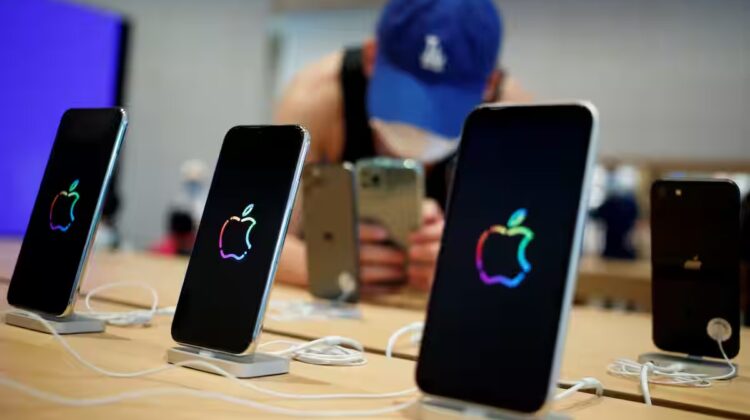
Apple’s iPhone exports from India have doubled, but component manufacturing needs to pick up
NEW DELHI : Since 2017, when Apple first started assembling its older version of iPhones in India, there have been many significant developments. The majority of the progress happened last year, following Apple CEO Tim Cook’s India visit in April 2023. Apple’s efforts to branch out its supply chain from China are finally bearing fruit in India. Through its contract manufacturers Foxconn, Pegatron, and Tata-owned Wistron, iPhone exports from the country have multiplied. Exports have reportedly surged from $6.27 billion in the fiscal year 2022–23 to $12.1 billion in 2023–24.
Apple’s market share too has improved after the company’s decision to move its assembly lines here. Apple’s market share in India currently stands at 6.4 percent, up from 4.6 percent in 2022. The company is looking at 8 percent share this year. However, to capture more share and offer the handset at a reasonable price, the Cupertino-based company will have to go beyond just assembling the iPhones here.
“Apple iPhone component manufacturing in India stands at under 9 percent,” an industry insider told on condition of anonymity. Things are picking up. All the focus now is on producing components in-house. It took a decade for China to reach where they are, he says. “India is new to the game but is picking up well. It’s worth noting that technology transfer from China is one of the biggest impediments because neither party is granting visas.
The Tata Group became the first Indian company to make Apple iPhones in India after it acquired a 100 percent stake in Wistron last year. It is also currently in the process of taking over Pegatron’s plant in Tamil Nadu. The Taiwanese firm has done the paperwork with Tata Electronics, and the acquisition is expected to be officially announced very soon, the source confirmed. In December, Pegatron’s assembly factory in China was taken over by Apple’s second-largest iPhone manufacturer, Luxshare. According to a Pegatron filing on the Taipei Exchange, the Chinese contract manufacturer will acquire a 62.5 percent stake in the facility in Shanghai.
Apple has 14 component suppliers in India, as per its 2022 supplier catalogue. In contrast, a bulk of them, 151 out of Apple’s 200 major suppliers, are based in China, which will continue to be its main manufacturing hub. Though the government gave clearance to some Chinese suppliers for operating in India in January, as per news reports, that is currently on hold.
In 2023, Apple manufactured and exported five iPhone models in India: 11, 12, 13, 14, and 15. Its leading manufacturer, Foxconn, exported about 58 percent of the total production, and the rest was sold locally. Pegatron and Wistron exported 80 percent and 96 percent of their total iPhone production, respectively. According to reports, 65 percent of iPhones manufactured in India are exported to the US, Europe, West Asia, and others. All of this led to Apple becoming the first individual brand to cross the $5 billion export mark from India. The country’s total mobile phone exports touched Rs 90,000 crore in FY23, led by iPhones.
The US tech giant started manufacturing the latest iPhones in India from the iPhone 14 onwards, and the iPhone 15 marked the first time that a newly released, India-assembled device was made available on its debut sales day. However, India-based plants are not involved in the production of the ultra-premium Pro models.
India needs a set of anchor companies for key components, which can further attract other smaller subcomponent vendors to set up their presence in India, explains Tarun Pathak, research director at Counterpoint Research. This will help drive local value addition in key components that contribute more to the overall cost of materials. “We need a diverse set of suppliers to make it competitive. Furthermore, India needs a skilled workforce that will help such companies find local talent easily. Infrastructure, regulatory, and policy frameworks are getting better.”
Speaking of China’s manufacturing approach in a recent interview, historian and author Chris Miller pointed out that of all the materials inside an iPhone, around a quarter of them by value are sourced from Chinese firms. In the initial iPhones, in China too, it was only the assembly that was done a decade ago. China has dramatically increased the value that accrues to Chinese firms in smartphone production by learning to produce the components as well.
“And we’re in the very early stages of seeing that in India. It’s going to take some time for Indian firms to learn how to produce and competitively produce the types of components that go into electronics. It’s not a good idea to just focus on assembling devices because you’re not capturing a lot of the value. Whereas if you start producing components, suddenly more value starts accruing to your firm,” he adds.
